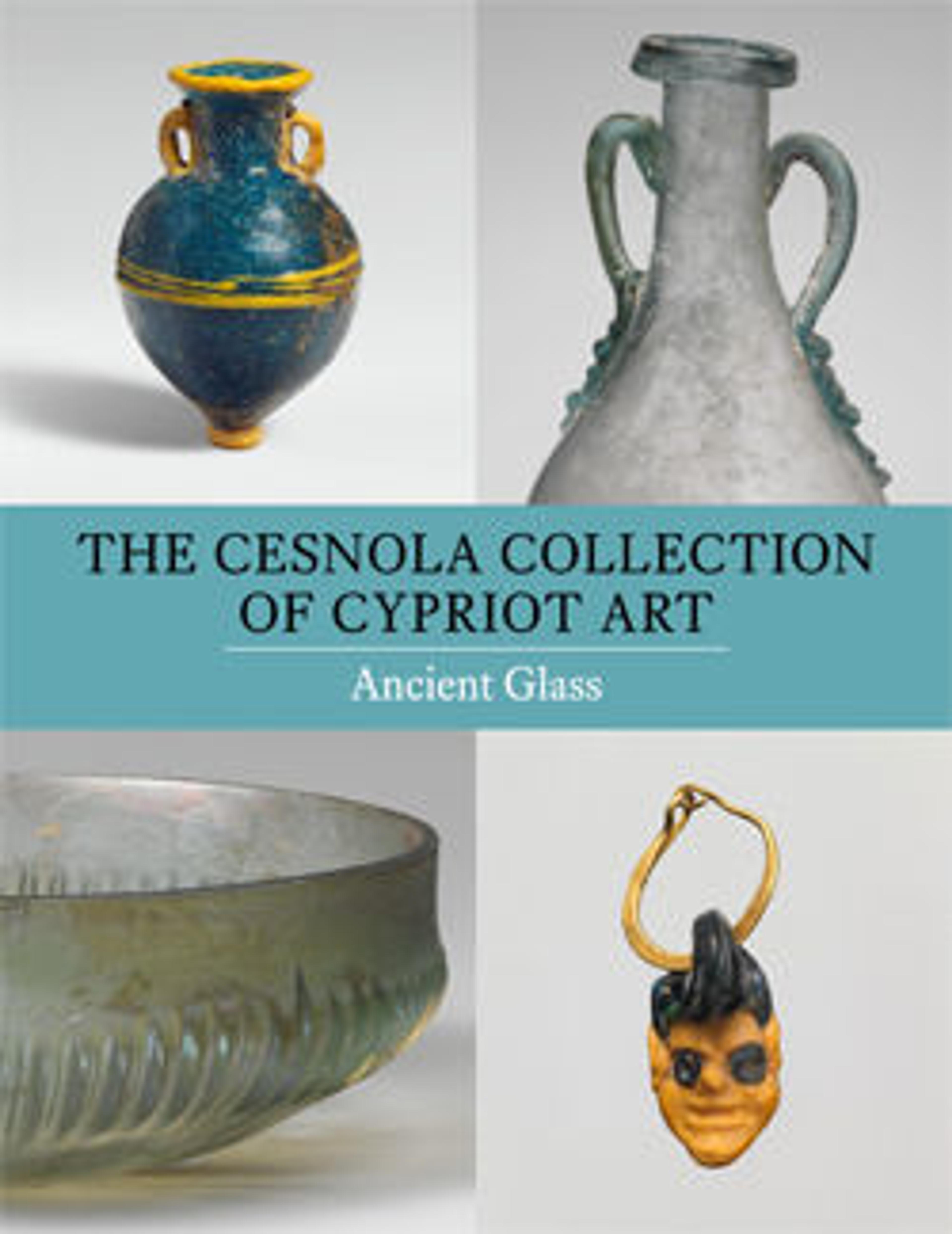Glass cup
Colorless with greenish tinge, with trail in same glass.
Plain, rounded rim; short, flaring neck; carinated body with straight, conical sides, then angled in to integral, tubular base ring; broad, flat bottom with slight small central kick.
Single horizontal trail around upper body, then spiral up to end below rim.
Complete, except for large hole in one side; many pinprick bubbles; heavily weathered and pitted, with brilliant iridescence; some soil encrustation and black, enamel-like weathering on interior.
Plain, rounded rim; short, flaring neck; carinated body with straight, conical sides, then angled in to integral, tubular base ring; broad, flat bottom with slight small central kick.
Single horizontal trail around upper body, then spiral up to end below rim.
Complete, except for large hole in one side; many pinprick bubbles; heavily weathered and pitted, with brilliant iridescence; some soil encrustation and black, enamel-like weathering on interior.
Artwork Details
- Title:Glass cup
- Period:Mid Imperial
- Date:2nd–3rd century CE
- Culture:Roman
- Medium:Glass; blown and trailed
- Dimensions:3 5/16 in. (8.5 cm)
Diameter: 3 1/4 × 2 1/4 in. (8.3 × 5.7 cm) - Classification:Glass
- Credit Line:The Cesnola Collection, Purchased by subscription, 1874–76
- Object Number:74.51.240
- Curatorial Department: Greek and Roman Art
More Artwork
Research Resources
The Met provides unparalleled resources for research and welcomes an international community of students and scholars. The Met's Open Access API is where creators and researchers can connect to the The Met collection. Open Access data and public domain images are available for unrestricted commercial and noncommercial use without permission or fee.
To request images under copyright and other restrictions, please use this Image Request form.
Feedback
We continue to research and examine historical and cultural context for objects in The Met collection. If you have comments or questions about this object record, please contact us using the form below. The Museum looks forward to receiving your comments.
